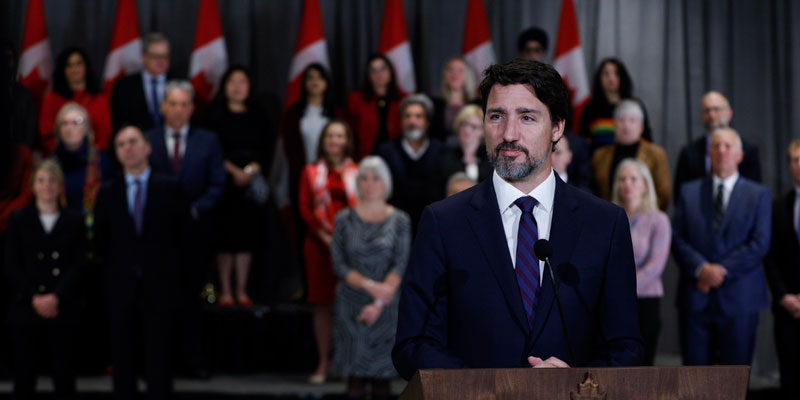Canadians will pay for Trudeau government’s record spending

On April 19, the Trudeau government will table its next budget, which will further reveal the depth of Canada’s fiscal problems. While the hundreds of billions of dollars in COVID-related spending, which contributed to the eye-popping $381.6 billion deficit in 2020/21, have grabbed headlines, it’s important to recognize that the Trudeau government was spending at historically high levels before the pandemic—with big consequences for Canadians.
Consider this. Between the Harper government’s last budget in 2015 and fiscal year 2018/19, inflation-adjusted federal government program spending (total spending minus interest costs) grew from $8,063 per person to $9,061 per person, the highest level in Canadian history up to that point.
In 2019/20, federal program spending rose further, setting a new record of $9,320 per person—before any COVID-related spending. After adjusting for inflation, that’s 3.6 per cent higher than per-person spending levels during the 2009 recession. The addition of COVID-related spending increases that number to $9,500 per person in 2019/20.
These record-high levels reflect significant spending increases over the Trudeau government’s tenure. Pre-pandemic (nominal) program spending increased by $79.3 billion between 2015/16 (the last budget year for the Harper government) and 2019/20—a 30.1 per cent increase over just four years.
More specifically, Ottawa ran budget deficits worth a total of $94.1 billion from 2015/16 to 2019/20. This proclivity for deficit-financed spending (i.e. borrowing) helped fuel Ottawa’s growing debt burden pre-COVID. In fact, pre-pandemic, Prime Minister Trudeau’s government was one of only three in Canadian history to accumulate federal per-person debt outside of war or recession.
By spending through borrowing, this government is effectively sticking future generations with the bill for today’s spending.
And it’s a big bill. In total, net debt (total debt minus financial assets) reached $812.9 billion in 2019/20 and is expected to eclipse $1.3 trillion in 2021/22. And just as households pay interest on mortgages and credit cards, Canadians must pay interest on federal debt. Higher debt (all else equal) means more tax dollars go to pay interest on the debt, which leaves less money for health care, social services and/or tax relief in the future.
Of course, the pandemic and recession led to higher spending and exacerbated Canada’s pre-existing fiscal challenges. According to the federal government’s most recent numbers, inflation-adjusted program spending will reach a projected $17,091 per person in 2020/21—by far the highest amount in Canadian history. In fact, per-person spending in 2020/21 is nearly double the amount spent during the 2009 recession and more than double peak spending during the Second World War.
Although federal per-person spending is expected to decline in 2021/22, projections suggest it will still be the second-highest amount in Canadian history at $11,370. Notably, this is also much higher than pre-pandemic spending in 2019, which was already at historic highs.
As the economy recovers, emergency-related spending should be sensibly reined in to reduce debt accumulation. And the Trudeau government must also address its pre-existing spending problem. If it doesn’t, Canadians will not only continue to bear the burden of mounting debt and the associated debt-interest costs, but will eventually pay higher taxes to cover the interest payments—for the same or lower level of government services.


